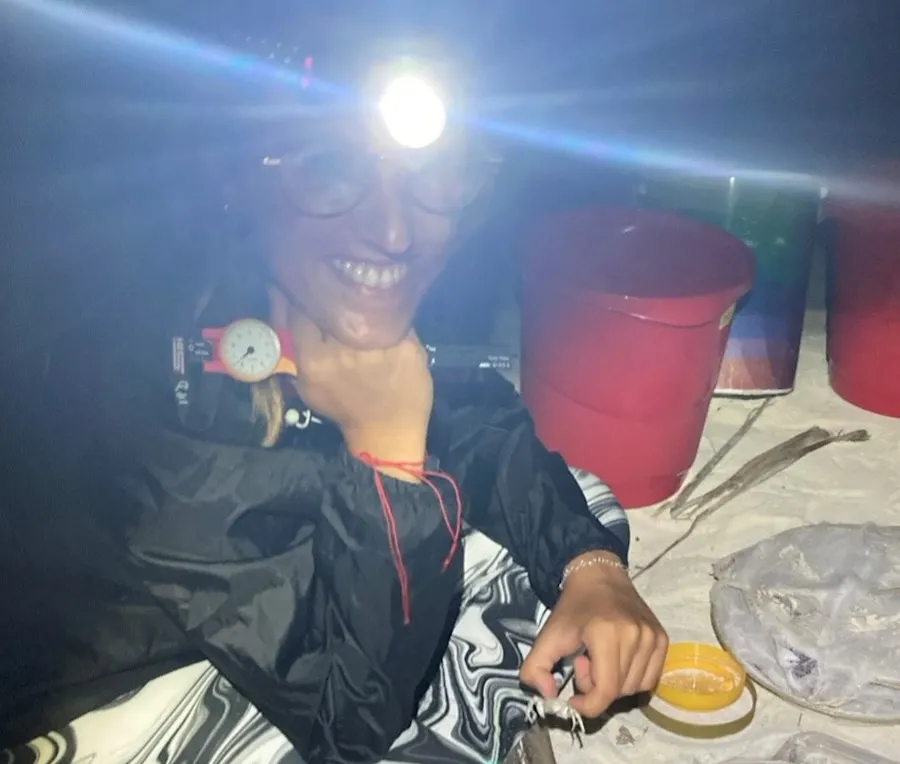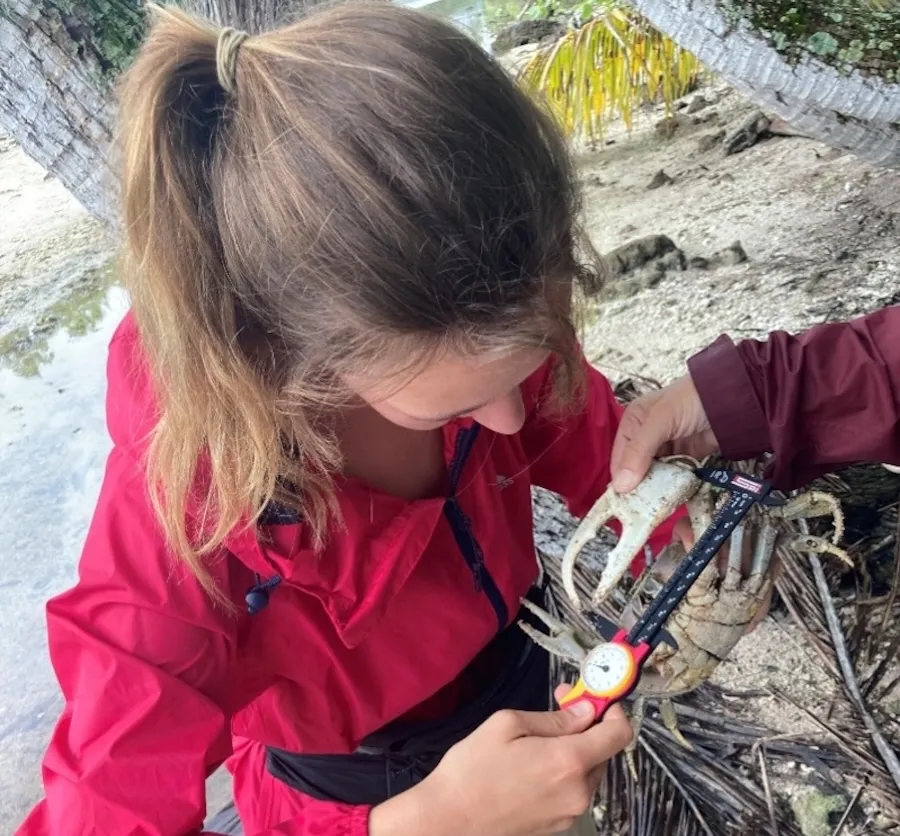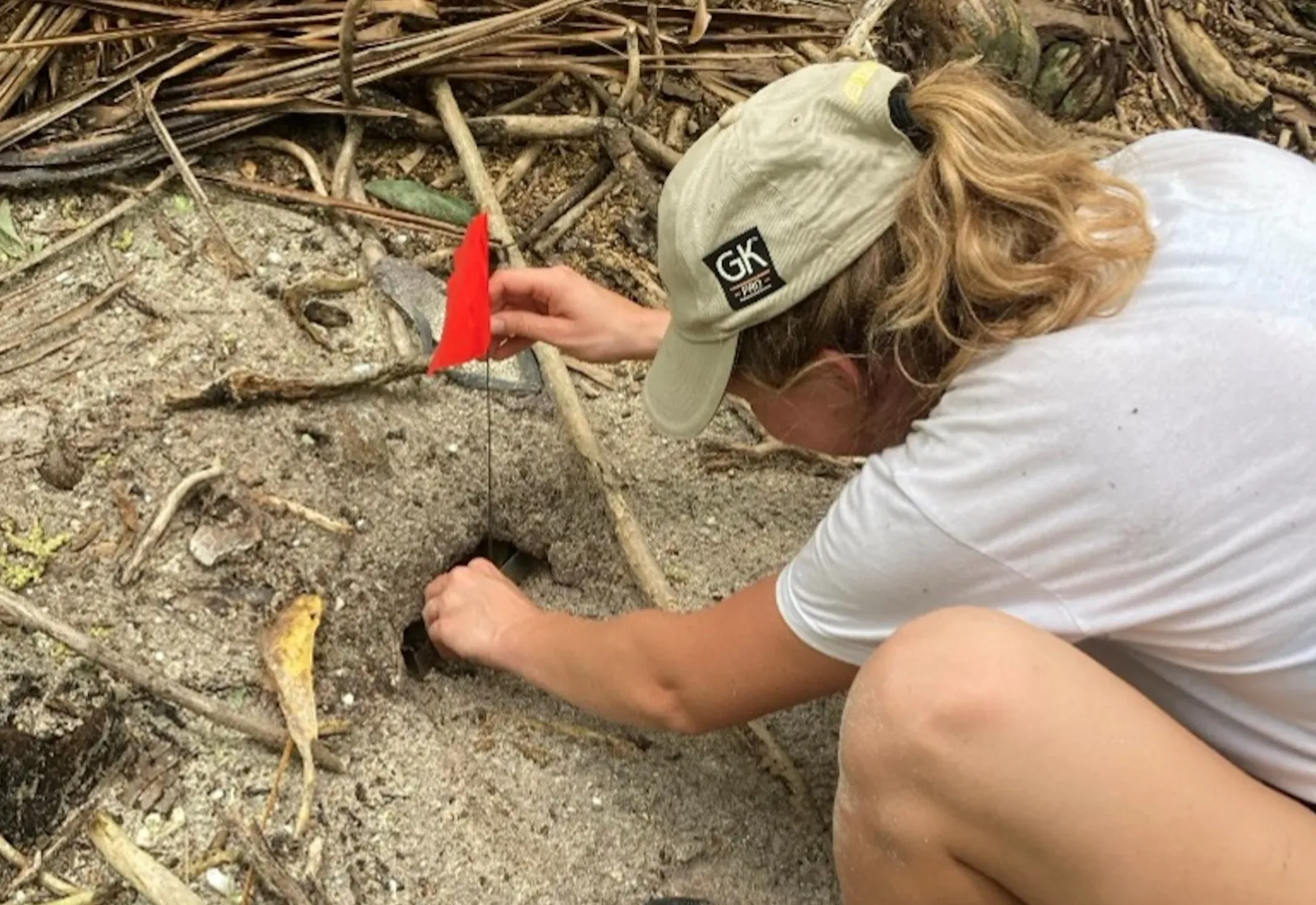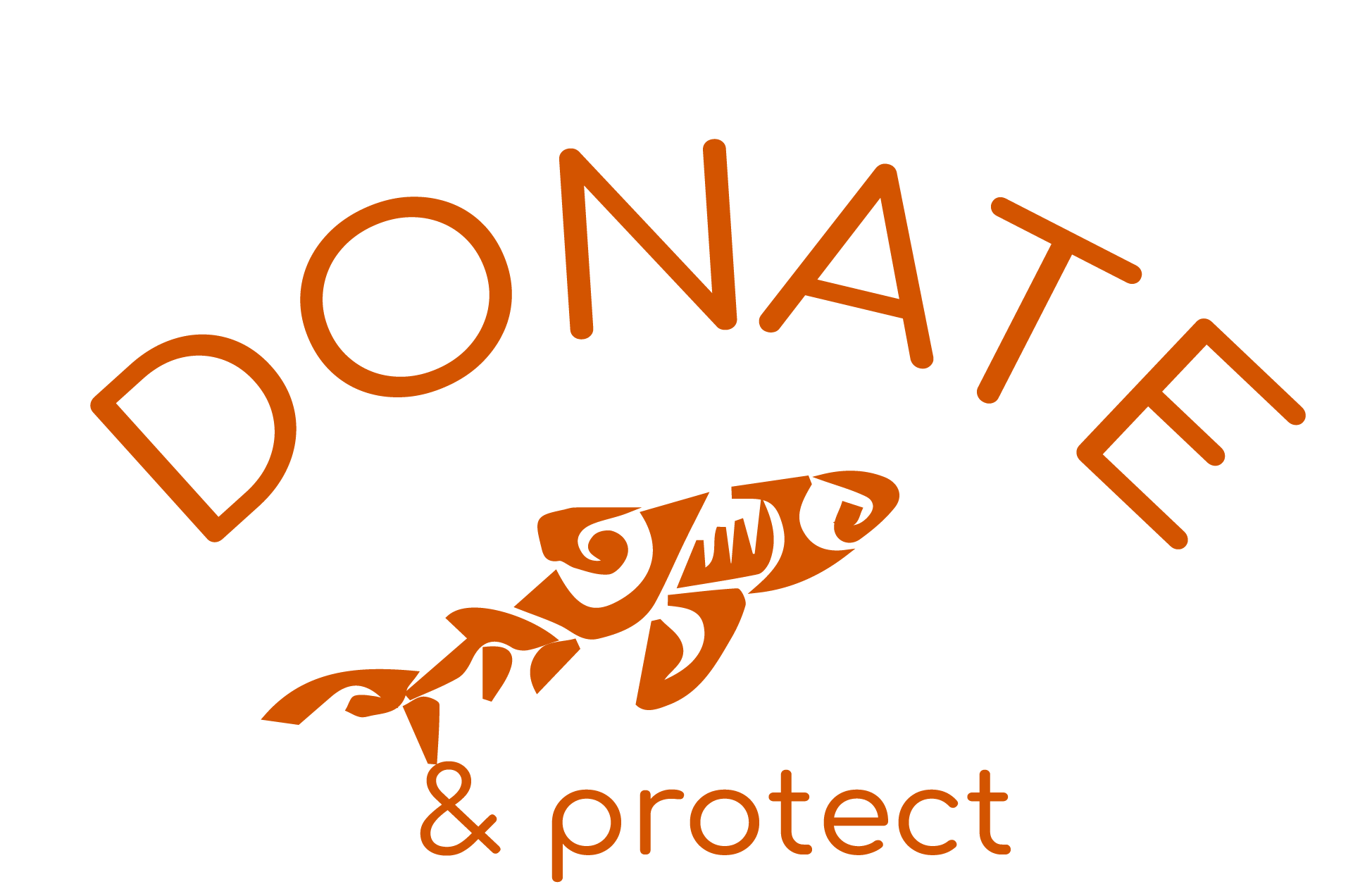
The same deployment was carried out before, during and immediately after the rat eradication, and this monitoring will therefore make it possible to measure the response of the crab community to the removal of the rats in the short, medium and long term.

In parallel, we detected a substantial increase in fiddler crab (Paraleptuca crassipes) activity in the hoa between Tiaraunu and Tauini, and the hoa between Hiranae and Oroatera – a species that we had only detected occasionally and in very small numbers before the 2022 eradication. This increase, already detected at the end of 2022, was confirmed across 2023 thanks to simultaneous crab counts conducted along the 35 km of coastal transects that we monitored for seabirds every three months. We also characterized variation in behavioral traits in hermit crabs, both in the field and in captivity, using protocols that were already used before the eradication, to characterize any eventual changes in behavior following the eradication.

The traits measured included boldness and exploratory behavior and involved more than 90 crabs from the different motu. Finally, we conducted an in-depth investigation of how tupa (Cardisoma carnifex) select and transform their habitat. To that aim, we characterized the tupa burrow density, substrate and vegetation of 51 sites (each site including 3 to 4 quadrates of 5 km²) pseudo-randomly selected from across the atoll, 8 to 12 months after the rat eradication. We also investigated how tupa surface activity varies across time and habitats and measured the effect of tupa burrow density on leaf consumption.



